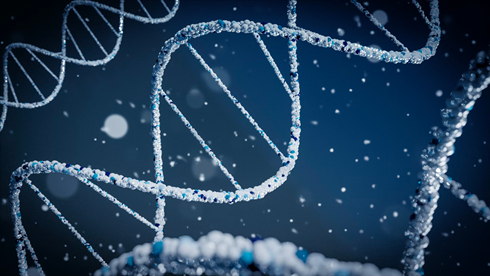
Understanding Gene Therapy
 Our DNA greatly influences our health. However, DNA sequences might occasionally deviate from the norm. An example of this is gene variation. These can occasionally be carried from father to kid via inheritance. Certain gene variations can cause various biological diseases. Gene therapy can help with this. Through gene therapy, our DNA can be changed. The objective is to restore any aberrant DNA to its original state.
Our DNA greatly influences our health. However, DNA sequences might occasionally deviate from the norm. An example of this is gene variation. These can occasionally be carried from father to kid via inheritance. Certain gene variations can cause various biological diseases. Gene therapy can help with this. Through gene therapy, our DNA can be changed. The objective is to restore any aberrant DNA to its original state.
Anatomy of Gene Therapy
Gene therapy is a medication developed to combat illnesses brought on by genetic flaws. Gene therapy is a new medical procedure that is now being tested on humans and animals to treat various illnesses.
The goal of gene therapy is to influence the body's production of disease-free proteins. Using RNA or DNA is a component of this therapy. The formation of RNA molecules occurs due to the creation of proteins.
Gene Therapy Functionality
Genetic abnormalities and many other medical issues can be treated by gene therapy. Since gene therapy originates from living origins rather than chemicals, they are referred to as "biologics." Gene therapy aims to alter the way your body's natural genes function. Gene therapy can result in three possible outcomes:
● The process of turning off a gene that promotes disease
● Adding a healthy gene copy to cells that already have a defective copy allows the healthy gene copy to counteract the harmful effects of the defective gene
● Providing unhealthy cells with new DNA "instructions" leads cells to die, eliminating the disease-causing cells
You can get an in-depth overview of gene therapy at sites like https://genetherapynetwork.com/.
Types of Gene Therapy
Somatic Gene Therapy
This type of therapy tries to treat or prevent a genetic condition in the patient by providing RNA molecules or correcting a DNA error in a somatic cell. People with hereditary mutation or a mutation that resulted from environmental circumstances may benefit from this treatment.
Gene Therapy for Sperm or Eggs
This type of therapy tries to fix a deficiency in eggs or sperm cells to stop hereditary disease types from eventually impacting future offspring.
Benefits and Risks of Gene Therapy
You've probably noticed gene therapy is both intriguing and somewhat complex. It might significantly alter the lives of people with cancer, uncommon genetic illnesses, and other conditions. But there are advantages and risks to employing gene therapy, just like any medical procedure.
Benefits
● In cases where no other treatments have been effective, gene therapy may be able to cure a patient
● Gene treatments available are administered just once. Compared to other therapies that call for several dosages, this is intriguing
● Gene therapy may be able to eliminate a person's symptoms permanently. For example, a parent with a defective gene removed won't pass that gene on to their offspring
Risks
● Gene therapy may cause an immune response that affects the incorrect cell type
● There can be a chance that viruses could infect someone if a viral vector is utilized. The person getting the therapy can have a weakened immune system and hence may have trouble fending off viruses, depending on the original ailment that is being treated
● New DNA sequences introduced into a person's genes may eventually result in an alteration that could result in cancer development
● Gene therapy can be expensive, making it unavailable to some people